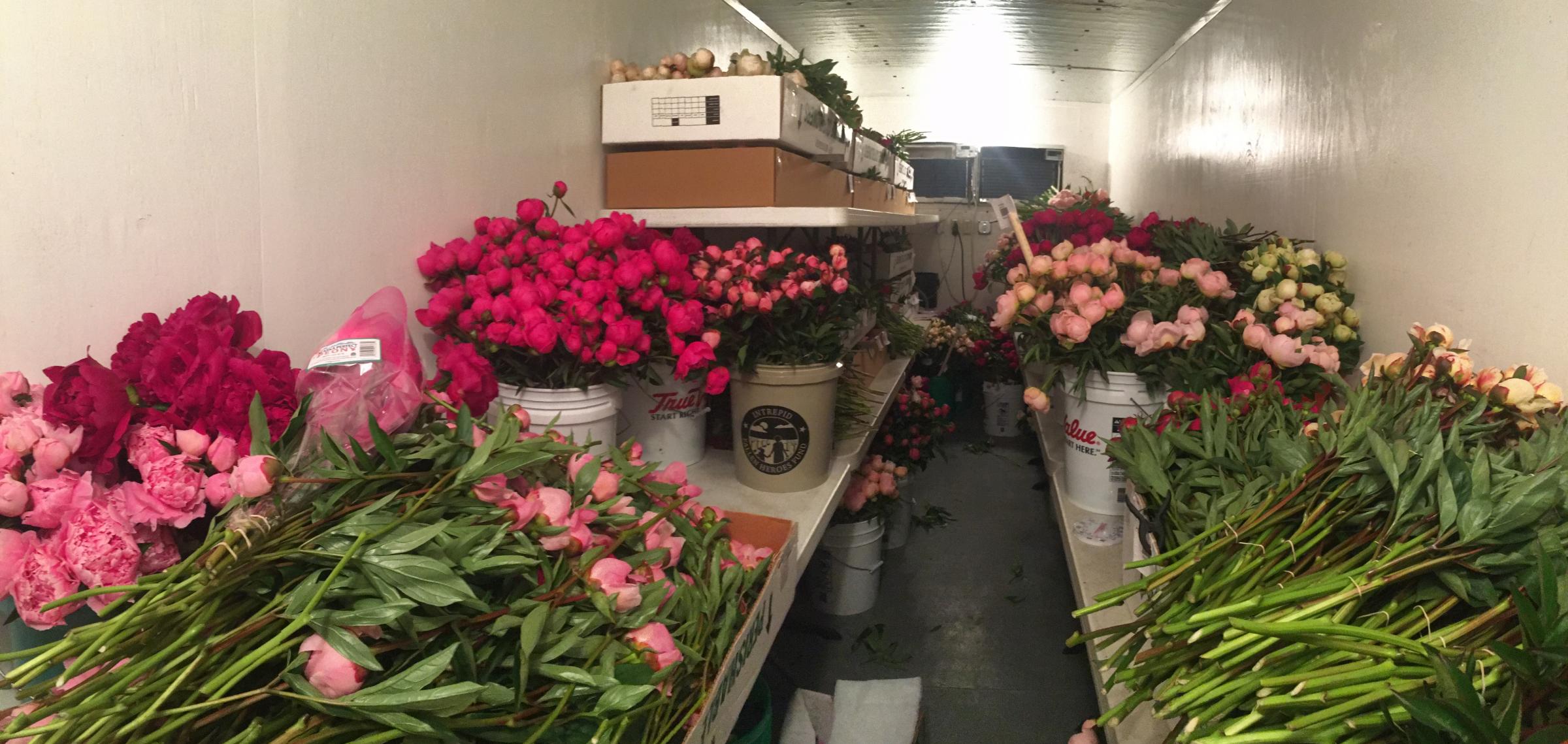Peonies are a growing Alaska export. In 2015, peony growers shipped more than 50,000 stems from Alaska, and Gov. Bill Walker recently declared July to be Alaska Peony Month for the second year in a row. But this year farmers were taken by surprise when the Alaska peony season came early.
Alaska’s cool summer weather allows peonies to grow during a time of year where they can’t almost anywhere else, but for the past few years, warmer springtime temperatures have caused the peonies to have an earlier season than usual.
Alaska Perfect Peony is a 25-acre garden just outside Homer. Rita Jo Schoultz runs the farm with her family. Before she began growing the flowers, Alaska Perfect Peony was Fritz Creek Gardens. Now, it is one of more than 100 farms in Alaska dedicated to growing, harvesting and exporting the flowers nationally and internationally for large events and weddings.
Schoultz said that this is the third year in a row that the peony season has been early.
Although the warmer climate is presenting challenges, Schoultz is committed to the industry. Since the flowers are sensitive to temperature, she has invested in three, large, walk-in coolers to store the closed buds in bundles and boxes until they are shipped.
“This is how we store things — we store them in these boxes with no water on them or anything. Feel that bud. See? That feels pretty solid,” Schoultz said, lightly pressing on a red flower bud.
The buds are pretty solid because peonies need to be picked when they are just starting to bloom in order to ship them successfully. A peony bud is about the size of a golf ball when it is picked. When it is exposed to warmer temperatures, it expands to form beautiful, large flowers that range in colors from white to soft pink, and coral to blood red.
More than 12,000 peony plants of eye-catching colors brighten Schoultz’ fields. She said that’s quite a contrast to how she started out, and points to a field out back. “We put 3,500 peonies out in that field. Nobody had ever done it before. Nobody knew how to do it and we made every mistake you could possibly think,” she said.
She had the wrong soil, didn’t know how much or how often to water the bulbs and planted rows too close or too far apart.
Becoming part of the peony industry was completely unplanned, Schoultz said, and she wouldn’t be part of it if it weren’t for her friend, Dr. Patricia Holloway with the University of Alaska Fairbanks. Holloway says that, at first, she didn’t know anything about peonies or cut flowers in Alaska. She learned about it from a man who came to Alaska from Oregon to give a presentation. Holloway gave a speech about plants that were growing well in Fairbanks, and one of them happened to be the peony.
“He learned about peonies from me, and then he told me about this whole idea of peonies being offseason,” she said.
After discovering this, Holloway called Schoultz and suggested the idea of starting a peony field on her property. Now the name Rita Jo Schoultz is known statewide for being one of the first gardens to export peonies during July, August and September.
However, this year, all of Schoultz’ flowers were cut and shipped a month earlier than normal.
According to Ronald Illingworth, the former president of the Alaska Peony Grower’s Association and chair of the Arctic Alaska Peony’s co-op, there are around 120 peony farms in the state. About 20 of those farms are on the Kenai Peninsula. And from Homer to Fairbanks, the seasons are beginning and ending earlier and earlier.
“The other part of it [the peony industry] is what’s happening to the climate. What that’s going to mean is another question. We’re going to try and investigate that at our winter conference in January, up here in Fairbanks, by having some climate scientists come and talk to the members about what they foresee as potential changes as it affects agriculture here in Alaska,” Illingworth said.
The changing climate is a worry for Schoultz and many other peony growers.
“I don’t know whether the weather is going to go back to the way it was. You know they talk about El Niño and ‘El’ this and ‘El’ that, but I don’t know whether this will be the new Homer or not,” Schoultz said.
It is possible that the earlier springs could result in Alaska’s peony season overlapping more significantly with other suppliers, such as Holland. Schoultz is concerned, but she is not threatened because she believes the peonies in Alaska are superior to those grown elsewhere.





